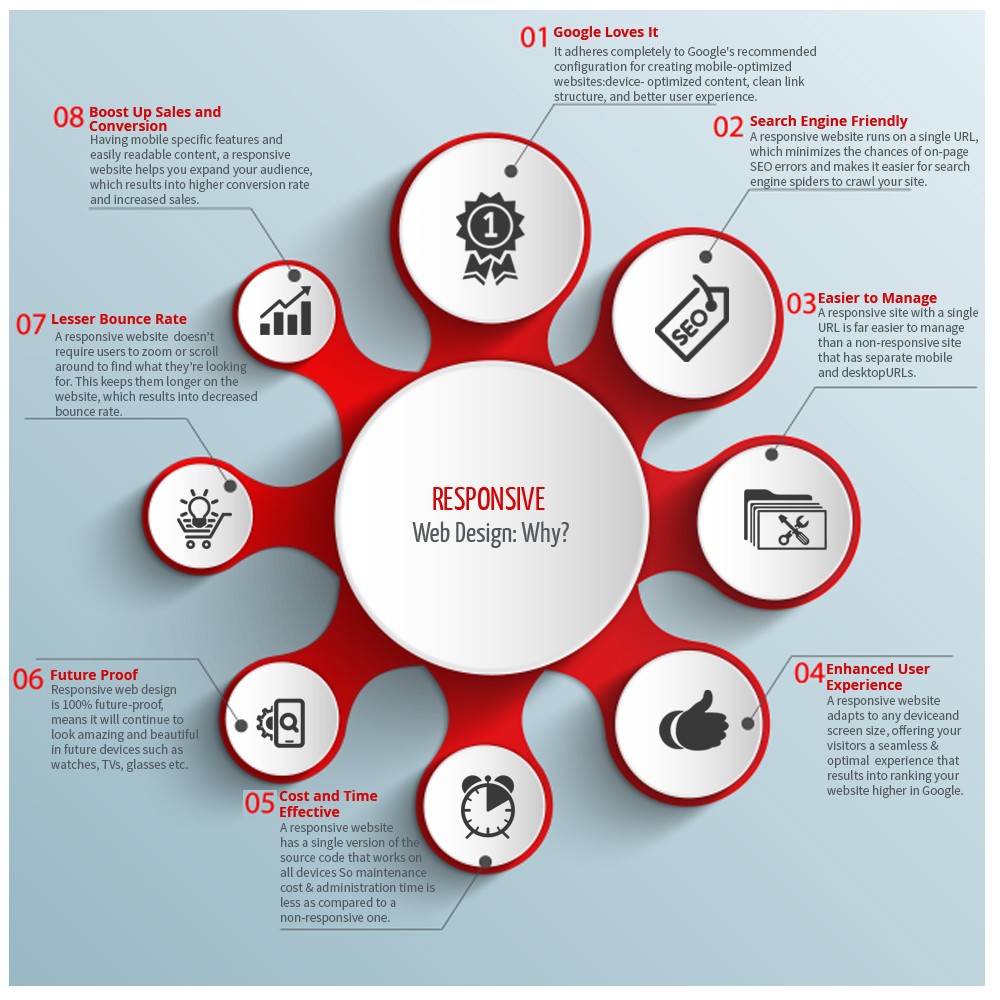Prepare Yourself To Journey Through Time And Uncover Exactly How Web Sites Have Ended Up Being A Lot More Sophisticated, User-Friendly, And Aesthetically Spectacular
Prepare Yourself To Journey Through Time And Uncover Exactly How Web Sites Have Ended Up Being A Lot More Sophisticated, User-Friendly, And Aesthetically Spectacular
Blog Article
Authored By-Kahn Trolle
In the past, internet sites were basic and focused on information. Navigating was direct, and style was for desktops. Now, customer experience is crucial. Data guides styles for very easy navigating. Receptive designs suit various tools. Today, dark setting decreases pressure, and minimal menus boost navigation. Interactive functions involve users, and strong visuals stand out. AI integration enhances interaction. See how style has actually evolved to boost your on-line trip.
Very Early Days of Website Design
In the very early days of web design, simpleness preponderated. Sites were standard, with minimal colors, fonts, and layouts. The emphasis was on offering information rather than showy visuals. Customers accessed the net with slow-moving dial-up links, so speed and performance were key.
building seo for your website were straightforward, usually located at the top or side of the page. Internet sites were created for computer, as mobile browsing had not been yet prevalent. Web content was king, and developers prioritized very easy readability over intricate layout components.
HTML was the main coding language utilized, and developers had to function within its restraints. Animations and interactive features were very little contrasted to today's criteria. Web sites were static, with little vibrant web content or personalized individual experiences.
Rise of User-Focused Design
With the evolution of internet site design, a change in the direction of user-focused layout concepts has become significantly noticeable. Today, developing internet sites that focus on user experience is critical for involving site visitors and accomplishing service objectives. https://localseoservicesnearme51628.blogrelation.com/32934922/explore-just-how-the-critical-use-empty-space-in-website-design-can-have-a-substantial-effect-on-the-method-users-interact-with-an-internet-site -focused layout includes recognizing the requirements, preferences, and actions of your target audience to customize the internet site's format, material, and features as necessary.
Developers now conduct thorough study, such as user studies and use testing, to collect understandings and feedback directly from individuals. https://seo-copywriting-services40628.blogdal.com/27387095/improve-your-site-s-appeal-and-enthrall-your-visitors-with-the-use-of-top-quality-visuals -driven technique aids in developing user-friendly navigation, clear calls-to-action, and visually appealing user interfaces that resonate with site visitors. By putting the customer at the center of the layout process, internet sites can deliver a much more individualized and delightful experience.
Receptive design has also become a crucial facet of user-focused layout, guaranteeing that internet sites are enhanced for different gadgets and screen dimensions. This adaptability improves ease of access and usability, accommodating the varied means individuals interact with sites today. In essence, the surge of user-focused style represents a change in the direction of producing electronic experiences that focus on the needs and assumptions of completion individual.
Modern Trends in Website Design
Discover the most up to date patterns shaping web design today. One famous pattern is dark setting layout, offering a smooth and modern look while lowering eye pressure in low-light settings. One more key trend is minimalist navigation, streamlining menus and boosting individual experience by focusing on essential elements. Including micro-interactions, such as computer animated buttons or scrolling impacts, can create a much more engaging and interactive site. Receptive design stays important, making sure seamless individual experiences across numerous devices. Furthermore, making use of strong typography and asymmetrical layouts can add aesthetic interest and draw attention to details material.
Incorporating AI technology, like chatbots for customer support or customized referrals, enhances individual interaction and enhances procedures. Availability has also end up being a substantial fad, with developers prioritizing comprehensive design techniques to deal with diverse user needs. Accepting sustainability by optimizing web site efficiency for rate and efficiency is an additional arising fad in web design. Collaborating with individual feedback and information analytics to repeat and enhance design constantly is vital for staying pertinent in the ever-evolving digital landscape. By accepting these modern fads, you can develop a visually attractive, user-friendly site that resonates with your target market.
Final thought
As you reflect on the advancement of web site style from the very early days to now, you can see just how user-focused style has actually become the driving force behind modern patterns.
Accept the journey of adjustment and adjustment in website design, constantly maintaining the user experience at the forefront.
Keep present with the current fads and technologies, and never stop developing your technique to develop aesthetically sensational and straightforward sites.
Advance, adapt, and create - the future of website design is in your hands.
